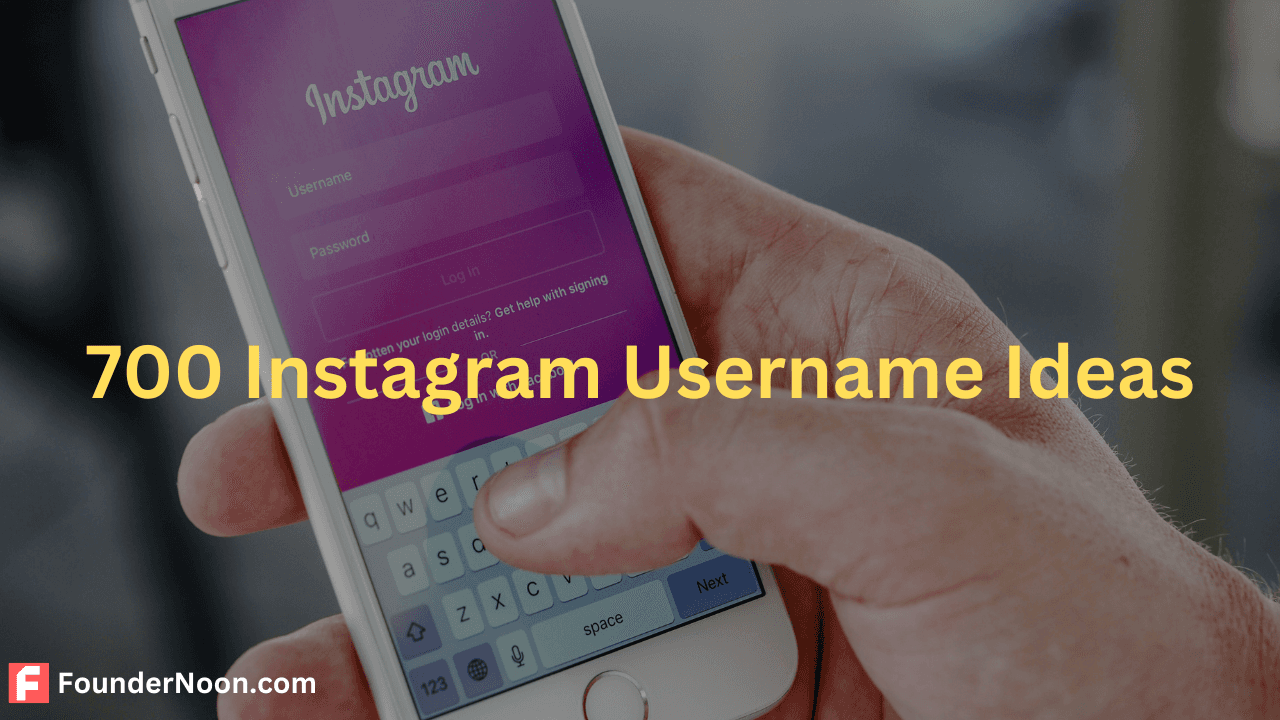The Complete B2B SaaS Go-To Market Checklist: Your Essential Guide to Launching Successfully
The Complete B2B SaaS Go-To Market Checklist: Your Essential Guide to Launching Successfully



Introduction
Introduction
Launching a B2B SaaS product without a solid go-to-market (GTM) plan is like building a house without a foundation – it won’t last long. In the world of SaaS, where competition is fierce and customers have endless options, a well-thought-out GTM strategy is crucial for getting your product in front of the right people and ensuring they stick around. In this guide, we’ll walk you through a complete GTM checklist that includes everything from market research to customer success. Let’s make sure you’re set up for a successful launch and sustained growth.

Launching a B2B SaaS product without a solid go-to-market (GTM) plan is like building a house without a foundation – it won’t last long. In the world of SaaS, where competition is fierce and customers have endless options, a well-thought-out GTM strategy is crucial for getting your product in front of the right people and ensuring they stick around. In this guide, we’ll walk you through a complete GTM checklist that includes everything from market research to customer success. Let’s make sure you’re set up for a successful launch and sustained growth.

Contents
Boost your business visibility to thousands of engaged readers!
Get Featured on 100+ pages across the FounderNoon website.
One month stretch ⇢ $100
Three-month stretch ⇢ $250
Boost your business visibility to thousands of engaged readers!
Get Featured on 100+ pages across the FounderNoon website.
One month stretch ⇢ $100
Three-month stretch ⇢ $250
Contents
1. Market Research and Target Audience Identification
1. Market Research and Target Audience Identification
Conduct In-Depth Market Research

Your SaaS product might solve real problems, but without understanding the market landscape, it’s like driving with your headlights off. Good market research reveals not only who your competitors are but also what gaps exist, and where your SaaS solution can shine.
Research Industry Trends: What’s happening in your niche? Is there growing demand, or is it a saturated market? Trends help you tailor your approach, allowing you to position your product where the market is heading rather than where it’s been.
Analyze Competitors: Identify key players in your field and study their offerings, pricing, customer feedback, and go-to-market strategies. Knowing their strengths and weaknesses will help you develop a competitive advantage.
Uncover Customer Pain Points: Talk to potential users, look at reviews of similar products, and find forums or communities where your target audience hangs out. The more you understand their struggles, the better you can shape your product and messaging.
Identify and Define Your Target Audience

Knowing your target audience is essential to crafting a relevant marketing and sales approach. In B2B SaaS, this often means understanding the specific roles, challenges, and needs of business professionals who will use or recommend your software.
Build Detailed Buyer Personas: Create profiles of your ideal customers, including job titles, industries, company sizes, and daily challenges. Buyer personas keep your marketing and sales efforts focused.
Segment by Needs and Value: Not all customers will benefit from your product in the same way. Identifying these different segments allows you to tailor messaging and feature focus, maximizing the relevance of your SaaS GTM strategy.
Conduct In-Depth Market Research

Your SaaS product might solve real problems, but without understanding the market landscape, it’s like driving with your headlights off. Good market research reveals not only who your competitors are but also what gaps exist, and where your SaaS solution can shine.
Research Industry Trends: What’s happening in your niche? Is there growing demand, or is it a saturated market? Trends help you tailor your approach, allowing you to position your product where the market is heading rather than where it’s been.
Analyze Competitors: Identify key players in your field and study their offerings, pricing, customer feedback, and go-to-market strategies. Knowing their strengths and weaknesses will help you develop a competitive advantage.
Uncover Customer Pain Points: Talk to potential users, look at reviews of similar products, and find forums or communities where your target audience hangs out. The more you understand their struggles, the better you can shape your product and messaging.
Identify and Define Your Target Audience

Knowing your target audience is essential to crafting a relevant marketing and sales approach. In B2B SaaS, this often means understanding the specific roles, challenges, and needs of business professionals who will use or recommend your software.
Build Detailed Buyer Personas: Create profiles of your ideal customers, including job titles, industries, company sizes, and daily challenges. Buyer personas keep your marketing and sales efforts focused.
Segment by Needs and Value: Not all customers will benefit from your product in the same way. Identifying these different segments allows you to tailor messaging and feature focus, maximizing the relevance of your SaaS GTM strategy.
2. Developing Your SaaS Go-To-Market Strategy
2. Developing Your SaaS Go-To-Market Strategy

Craft a Marketing Plan Tailored for SaaS
A solid marketing plan is your roadmap to getting your SaaS product in front of potential customers. Here’s how to break down your marketing efforts.
Content Marketing: Share valuable insights, tips, and case studies that help your audience understand your product’s value. Blog posts, white papers, and webinars can position your SaaS company as an industry authority.
Leverage Social Media: Use social media channels where your audience hangs out. LinkedIn is great for B2B SaaS, while Twitter might work for industries with a tech focus. Post consistently and engage in discussions to build awareness and trust.
Search Engine Optimization (SEO): Optimize your website and content around high-value keywords. This helps drive organic traffic from people actively searching for solutions like yours.
Design a Sales Strategy Aligned with Your SaaS Model
An aligned sales strategy is key for moving leads through the pipeline efficiently. For SaaS products, this often includes elements like demos, free trials, or proof-of-concept stages.
Train Your Sales Team on Customer Needs: Equip your sales team with insights into the customer pain points uncovered during market research. This will allow them to address customer concerns effectively.
Focus on High-Value Activities: In B2B SaaS, not all leads are equal. Focus on leads that match your ideal customer profile and show high potential. Tools like lead scoring can help prioritize efforts.
Use the Right Sales Tactics: From cold emails to personalized demos, your approach should align with the customer’s stage in the buying journey. Demo calls and follow-up messages are key for higher conversion rates.
Set a Clear Pricing Strategy
Pricing a SaaS product can be challenging. You want it high enough to convey value but accessible enough to drive adoption.
Choose a Pricing Model That Matches Customer Needs: Options like per-user, tiered, or usage-based pricing each cater to different types of customers. Find the sweet spot that offers value to your target audience while maximizing revenue.
Consider Competitors’ Pricing: See how similar companies price their products and find ways to differentiate. If your product offers unique features, customers may be willing to pay a premium.
Test and Iterate: Pricing isn’t set in stone. Gather feedback and monitor conversion rates to understand if customers find your price attractive. Adjust based on market feedback and sales data.

Craft a Marketing Plan Tailored for SaaS
A solid marketing plan is your roadmap to getting your SaaS product in front of potential customers. Here’s how to break down your marketing efforts.
Content Marketing: Share valuable insights, tips, and case studies that help your audience understand your product’s value. Blog posts, white papers, and webinars can position your SaaS company as an industry authority.
Leverage Social Media: Use social media channels where your audience hangs out. LinkedIn is great for B2B SaaS, while Twitter might work for industries with a tech focus. Post consistently and engage in discussions to build awareness and trust.
Search Engine Optimization (SEO): Optimize your website and content around high-value keywords. This helps drive organic traffic from people actively searching for solutions like yours.
Design a Sales Strategy Aligned with Your SaaS Model
An aligned sales strategy is key for moving leads through the pipeline efficiently. For SaaS products, this often includes elements like demos, free trials, or proof-of-concept stages.
Train Your Sales Team on Customer Needs: Equip your sales team with insights into the customer pain points uncovered during market research. This will allow them to address customer concerns effectively.
Focus on High-Value Activities: In B2B SaaS, not all leads are equal. Focus on leads that match your ideal customer profile and show high potential. Tools like lead scoring can help prioritize efforts.
Use the Right Sales Tactics: From cold emails to personalized demos, your approach should align with the customer’s stage in the buying journey. Demo calls and follow-up messages are key for higher conversion rates.
Set a Clear Pricing Strategy
Pricing a SaaS product can be challenging. You want it high enough to convey value but accessible enough to drive adoption.
Choose a Pricing Model That Matches Customer Needs: Options like per-user, tiered, or usage-based pricing each cater to different types of customers. Find the sweet spot that offers value to your target audience while maximizing revenue.
Consider Competitors’ Pricing: See how similar companies price their products and find ways to differentiate. If your product offers unique features, customers may be willing to pay a premium.
Test and Iterate: Pricing isn’t set in stone. Gather feedback and monitor conversion rates to understand if customers find your price attractive. Adjust based on market feedback and sales data.
3. Building and Positioning Your SaaS Product
3. Building and Positioning Your SaaS Product

Focus on Product Development for Customer Experience
A great product is the foundation of customer success. Your SaaS product should be easy to use, provide clear value, and be built to solve the specific problems your audience faces.
Design for Simplicity and Value: A cluttered interface or complex features can be off-putting. Keep the user experience simple and ensure each feature adds real value to the user’s day-to-day.
Incorporate Customer Feedback Early and Often: The best way to create a successful SaaS product is to involve users throughout the development process. Gather feedback regularly to make improvements.
Prioritize Stability and Security: SaaS customers need reliable software that protects their data. Invest in robust architecture and secure data management to meet customer expectations.
Define and Communicate Your Competitive Advantage
A SaaS market is typically crowded, so standing out is essential. Highlighting your competitive advantage gives your target audience a reason to choose your product over others.
Highlight Unique Features and Benefits: If your product solves a problem faster, cheaper, or more efficiently than competitors, make that your central selling point.
Emphasize Customer Success Stories: Testimonials and case studies are powerful in convincing prospects that your SaaS product delivers real results.
Build a Strong Brand: A recognizable and trusted brand is a competitive advantage on its own. Invest in consistent branding, messaging, and customer service that aligns with your product’s value proposition.

Focus on Product Development for Customer Experience
A great product is the foundation of customer success. Your SaaS product should be easy to use, provide clear value, and be built to solve the specific problems your audience faces.
Design for Simplicity and Value: A cluttered interface or complex features can be off-putting. Keep the user experience simple and ensure each feature adds real value to the user’s day-to-day.
Incorporate Customer Feedback Early and Often: The best way to create a successful SaaS product is to involve users throughout the development process. Gather feedback regularly to make improvements.
Prioritize Stability and Security: SaaS customers need reliable software that protects their data. Invest in robust architecture and secure data management to meet customer expectations.
Define and Communicate Your Competitive Advantage
A SaaS market is typically crowded, so standing out is essential. Highlighting your competitive advantage gives your target audience a reason to choose your product over others.
Highlight Unique Features and Benefits: If your product solves a problem faster, cheaper, or more efficiently than competitors, make that your central selling point.
Emphasize Customer Success Stories: Testimonials and case studies are powerful in convincing prospects that your SaaS product delivers real results.
Build a Strong Brand: A recognizable and trusted brand is a competitive advantage on its own. Invest in consistent branding, messaging, and customer service that aligns with your product’s value proposition.
4. Preparing Your Marketing and Sales Teams
4. Preparing Your Marketing and Sales Teams
Empower Your Marketing Team with Tools for Success
Your marketing team is the bridge between your product and the market. Equip them with tools and insights to maximize their effectiveness.
Invest in Marketing Automation: Tools like HubSpot or Marketo can automate repetitive tasks, helping your team focus on strategy. Automation also makes it easier to personalize marketing messages based on customer behavior.
Align Marketing and Sales: Marketing and sales teams should work closely to ensure that leads are nurtured and handed off smoothly. Regular check-ins and shared metrics can improve this alignment.
Use Analytics to Refine Strategies: Analytics tools provide data on everything from campaign performance to website behavior. Analyzing this data helps refine your marketing plan and identify high-performing channels.
Train Your Sales Team for Effective Conversion
Sales in B2B SaaS often involve educating customers and handling objections. Invest time in training your sales team to address common questions and provide valuable insights.
Product Training and Demo Practice: Your sales team should be product experts. Regular training sessions and demo practice ensure they’re confident in presenting your product.
Objection Handling Skills: Many prospects will have hesitations. Equip your sales team with scripts and strategies for handling objections confidently.
Nurture Post-Sale Relationships: Sales don’t end at the close. Encourage the team to check in with customers post-sale, showing that your SaaS company is committed to long-term success.
Empower Your Marketing Team with Tools for Success
Your marketing team is the bridge between your product and the market. Equip them with tools and insights to maximize their effectiveness.
Invest in Marketing Automation: Tools like HubSpot or Marketo can automate repetitive tasks, helping your team focus on strategy. Automation also makes it easier to personalize marketing messages based on customer behavior.
Align Marketing and Sales: Marketing and sales teams should work closely to ensure that leads are nurtured and handed off smoothly. Regular check-ins and shared metrics can improve this alignment.
Use Analytics to Refine Strategies: Analytics tools provide data on everything from campaign performance to website behavior. Analyzing this data helps refine your marketing plan and identify high-performing channels.
Train Your Sales Team for Effective Conversion
Sales in B2B SaaS often involve educating customers and handling objections. Invest time in training your sales team to address common questions and provide valuable insights.
Product Training and Demo Practice: Your sales team should be product experts. Regular training sessions and demo practice ensure they’re confident in presenting your product.
Objection Handling Skills: Many prospects will have hesitations. Equip your sales team with scripts and strategies for handling objections confidently.
Nurture Post-Sale Relationships: Sales don’t end at the close. Encourage the team to check in with customers post-sale, showing that your SaaS company is committed to long-term success.

















2,678+ people enjoy it
➤ Every week, we dig up stories of how regular people started and grew their businesses—
➤ Plus the marketing hacks that won them customers.
➤ Then, we share those insights with you.
➤ Every week, we dig up stories of how regular people started and grew their businesses—
➤ Plus the marketing hacks that won them customers.
➤ Then, we share those insights with you.
5. Driving Customer Success for Long-Term Growth
5. Driving Customer Success for Long-Term Growth
Implement a Customer Success Program
Customer success is a proactive approach to ensure customers get the most value out of your product, leading to higher retention rates and referrals.
Onboarding Programs: Make it easy for new users to get started with guided onboarding, tutorials, and support. A smooth start can greatly improve customer experience.
Dedicated Customer Success Managers (CSMs): For high-value customers, assign a CSM who can provide ongoing support and ensure they’re using the product effectively.
Monitor Customer Health Scores: Track engagement metrics to identify customers at risk of churn. Regular check-ins and proactive support can turn these around.
Leverage Feedback for Continuous Improvement
Your customers hold valuable insights that can help improve your SaaS product and your GTM strategy.
Use NPS and CSAT Surveys: Regularly collect feedback to gauge customer satisfaction. Low scores should prompt further investigation and follow-up.
Create Feedback Loops Across Teams: Share feedback with product, sales, and marketing teams to ensure improvements are data-driven.
Refine Marketing and Product Based on Feedback: Use feedback to adjust messaging, refine features, and make your SaaS offering even more attractive.
Implement a Customer Success Program
Customer success is a proactive approach to ensure customers get the most value out of your product, leading to higher retention rates and referrals.
Onboarding Programs: Make it easy for new users to get started with guided onboarding, tutorials, and support. A smooth start can greatly improve customer experience.
Dedicated Customer Success Managers (CSMs): For high-value customers, assign a CSM who can provide ongoing support and ensure they’re using the product effectively.
Monitor Customer Health Scores: Track engagement metrics to identify customers at risk of churn. Regular check-ins and proactive support can turn these around.
Leverage Feedback for Continuous Improvement
Your customers hold valuable insights that can help improve your SaaS product and your GTM strategy.
Use NPS and CSAT Surveys: Regularly collect feedback to gauge customer satisfaction. Low scores should prompt further investigation and follow-up.
Create Feedback Loops Across Teams: Share feedback with product, sales, and marketing teams to ensure improvements are data-driven.
Refine Marketing and Product Based on Feedback: Use feedback to adjust messaging, refine features, and make your SaaS offering even more attractive.
Conclusion
Conclusion
Launching a B2B SaaS product successfully takes a well-rounded GTM strategy that aligns your product, marketing, and sales teams. By following this checklist, you’ll ensure that your SaaS company not only attracts new users but also retains them for long-term growth. Remember, the most successful go-to-market strategies are dynamic. They grow and adapt based on market changes and customer feedback.
Let your GTM strategy be the backbone of your SaaS success!
Do me a favor and pass this on to a pal or share? It'll take just 20 seconds—this one took me about 5 hours to research and write 🫠
P.S. I’ve got a weekly newsletter where I share stories about founders who have started successful online businesses, growth strategies, and tips to start/grow your own business. I would love for you to join here
Read about how this saas company makes $40k/month with a Release Notes Tool here
Launching a B2B SaaS product successfully takes a well-rounded GTM strategy that aligns your product, marketing, and sales teams. By following this checklist, you’ll ensure that your SaaS company not only attracts new users but also retains them for long-term growth. Remember, the most successful go-to-market strategies are dynamic. They grow and adapt based on market changes and customer feedback.
Let your GTM strategy be the backbone of your SaaS success!
Do me a favor and pass this on to a pal or share? It'll take just 20 seconds—this one took me about 5 hours to research and write 🫠
P.S. I’ve got a weekly newsletter where I share stories about founders who have started successful online businesses, growth strategies, and tips to start/grow your own business. I would love for you to join here
Read about how this saas company makes $40k/month with a Release Notes Tool here






